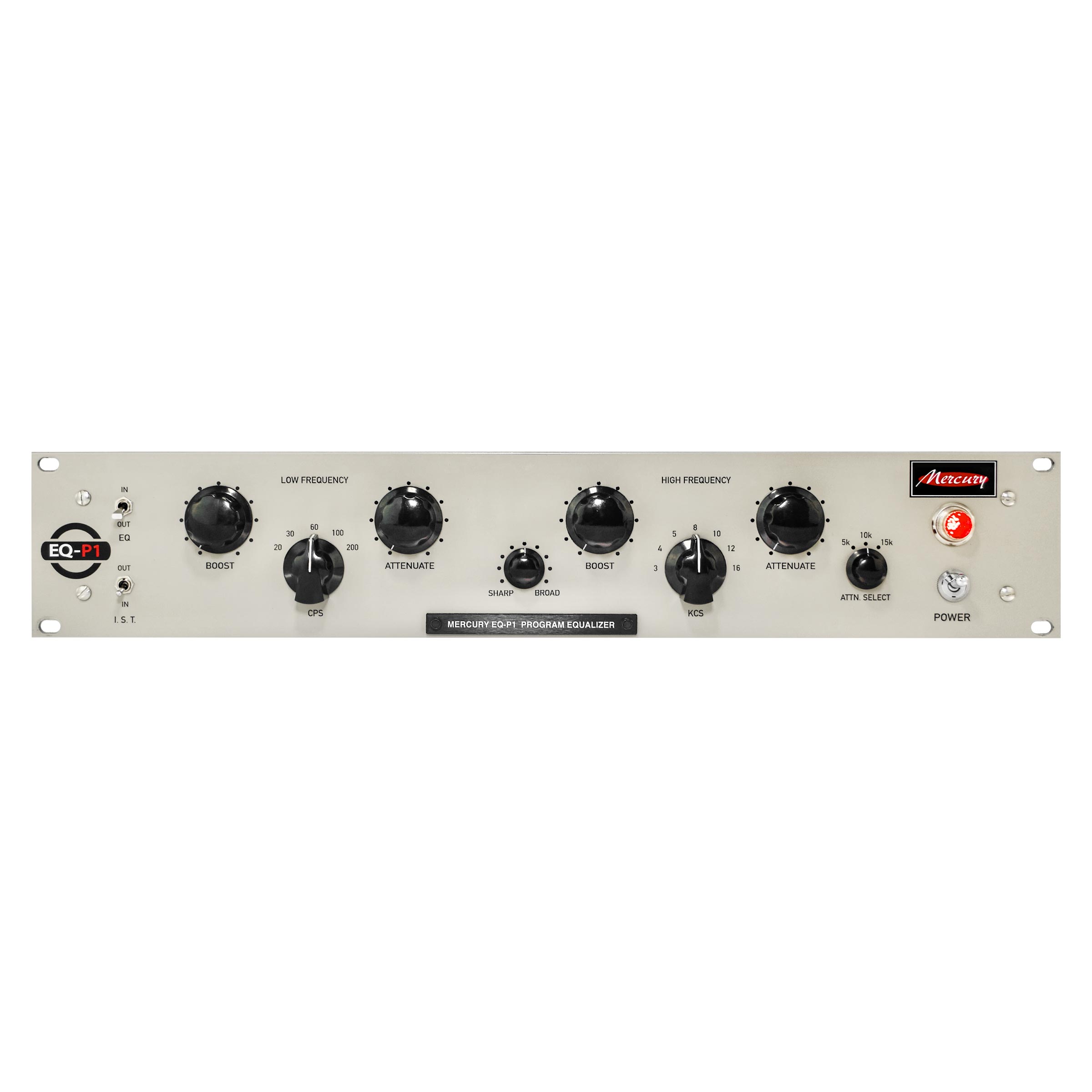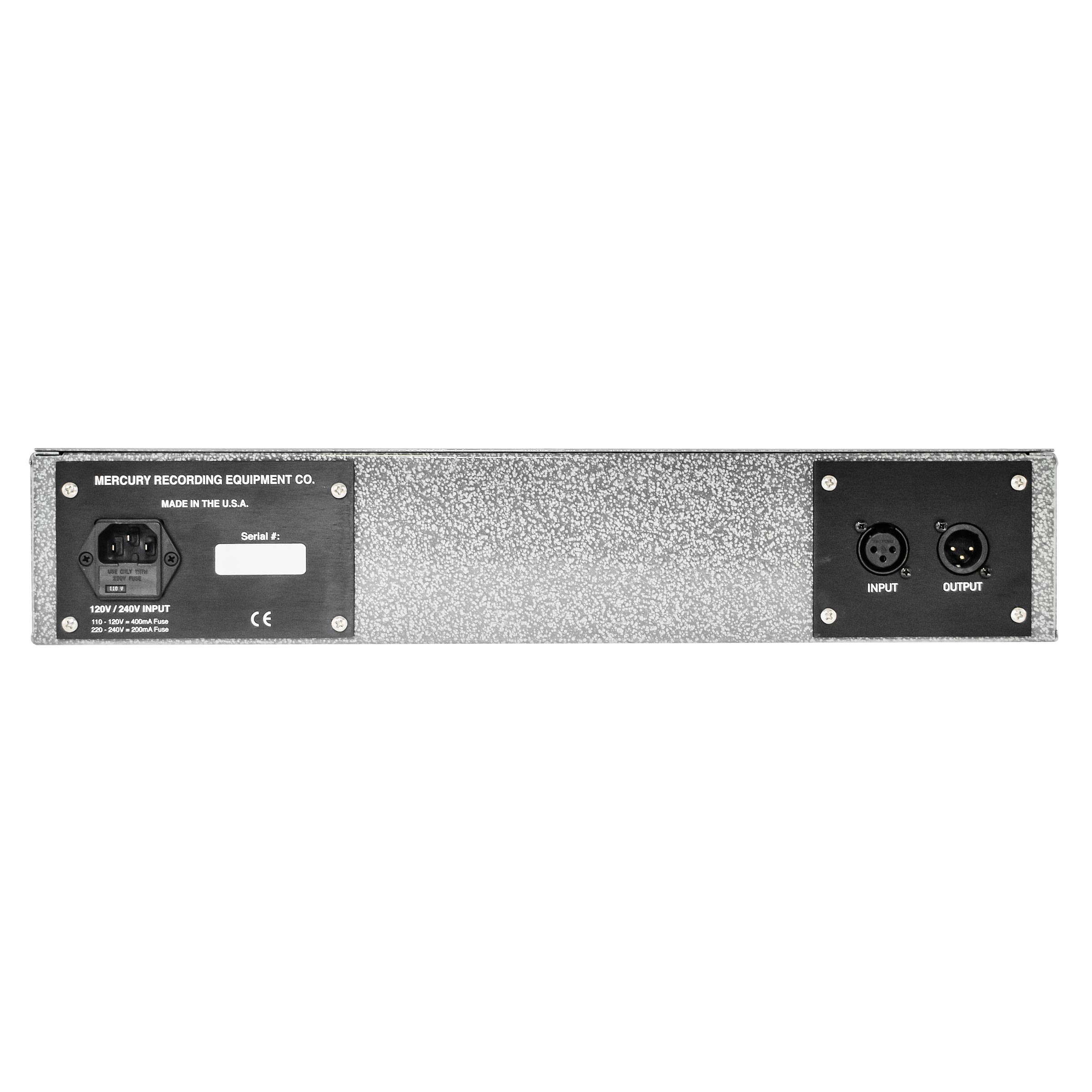Mercury EQ-P1 Studio Program Equalizer
The Mercury EQ-P1 is modelled after the classic ‘Pultec EQP1a’ design, which employs a passive equalization circuit and a fully balanced (push-pull) amplifier for gain compensation. The latest Mercury production incorporates premium-quality passive components, while staying faithful to the original circuitry. Additionally, like all other Mercury products, it features transformer-balanced inputs and outputs.
Apart from the implementation of a more robust and stable power supply and the use of DC instead of AC for the heaters, the only other update to the Mercury EQP2 is one of its most sought-after features – the Mercury I.S.T. Switch.
This switch allows engineers to toggle the Interstage Transformer on or off, providing them with the flexibility to switch between the standard Mercury warm, musical, “vintage” tone (with the I.S.T. Switch not engaged) and a more open and airy version of the same full, warm tone (with the switch engaged). Unlike the original Pultec EQP, where the Interstage transformer was always in the signal path, the Mercury EQ-P1 and EQ-P2 Studio Program Equalizers offer the ability to engage or disengage the transformer with the flick of a switch. This results in a slight widening of the sound and a slightly more open top end when the transformer is not in the circuit. This feature is highly valued by many of today’s engineers who appreciate having the option to choose between two great, but different sounds without altering their frequencies or settings. It’s important to note that the input and output transformers are always in the circuit, regardless of whether the I.S.T. Switch is engaged or not.
With the Mercury I.S.T. Switch, engineers can easily alter the tube’s characteristics with a simple flip of a switch, making it a highly flexible and modern feature unique to the Mercury EQ-P1 circuit. This switch provides users with the option to utilize the 1:1 transformer in the middle of the circuit or bypass it altogether, giving them greater control over the sound.
Here’s a possible rewrite for the given bullet points:
Frequencies
- Low Frequency Select (CPS): 20, 30, 60, 100, 200 Hz
- Low Frequency Boost Control: Shelf Boost, ranging from 0dB to +13dB
- Low Frequency Attenuate Control: Shelf Attenuate, ranging from 0dB to -17dB
- High Frequency Select (KCS): 3, 4, 5, 8, 10, 12, 16 kHz
- High Frequency Boost Control: Shelf Boost, ranging from 0dB to +16dB
- High Frequency Attenuate Control: 10k Shelf Attenuate, ranging from 0dB to -16dB
Note: CPS stands for “Cycles per second”, and KCS stands for “Kilocycles per second”.


